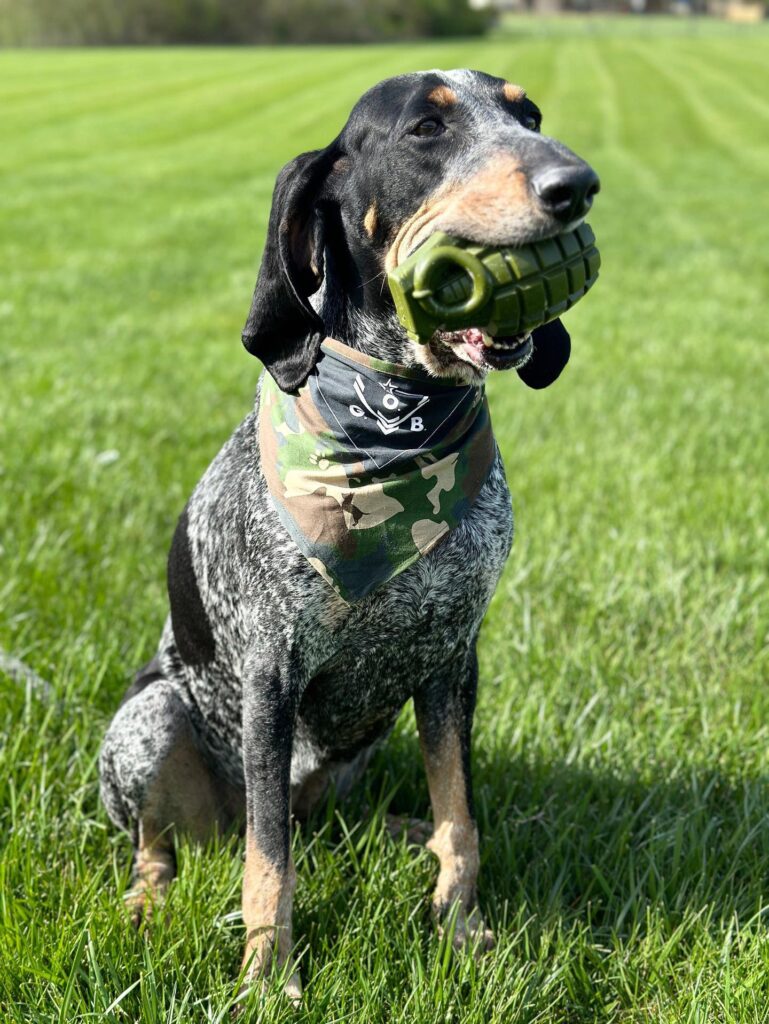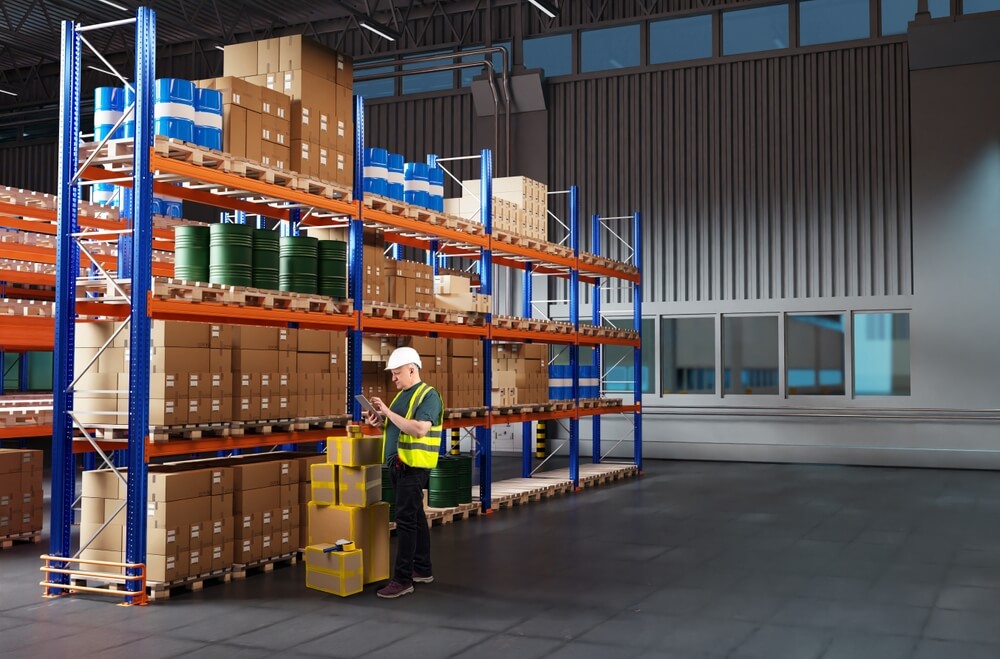Dog product manufacturing requires more than standard pet industry materials and testing. Collars, toys, beds, and harnesses must withstand chewing, pulling, and outdoor exposure while meeting strict safety standards. Pet owners expect products that are long-lasting, safe, and tailored to different breeds’ needs, making material selection and durability testing critical for manufacturers.
For brands entering or expanding in the dog product market, choosing the right manufacturing partner is crucial for product quality and scalability. A well-vetted supplier ensures regulatory compliance, product consistency, and efficient production to keep up with demand.
From sourcing and safety standards to cost-effective customization, this guide covers everything you need to know about dog product manufacturing. Whether you’re launching a new brand or scaling an existing product line, a strategic approach to manufacturing and compliance will give you a competitive edge in this growing industry.
Key Takeaways
- Dog products require high durability and safety standards, making material selection and regulatory compliance essential for quality manufacturing.
- Trends like smart pet technology, sustainability, and premiumization are driving innovation, influencing both product development and consumer expectations.
- Choosing the right manufacturer ensures consistency, safety compliance, and efficient production, helping brands scale while maintaining product integrity.
- Balancing cost efficiency and customization through strategic sourcing, supply chain optimization, and technology adoption is key to market success.
Why Dog Product Manufacturing Requires Specialized Expertise
Dog products undergo more wear and tear than most pet items, making durability, material selection, and safety testing top priorities in manufacturing. Unlike products for cats or small animals, dog toys, collars, beds, and harnesses must endure frequent chewing, pulling, and outdoor elements. This means manufacturers need reinforced stitching, durable fabrics, and non-toxic, chew-resistant materials to produce long-lasting, safe products that meet regulatory standards.
Beyond durability, breed-specific needs add another layer of complexity. A harness for a small dog must be lightweight and flexible, while a large breed’s harness needs stronger webbing, reinforced buckles, and weight distribution features. The same applies to collars, leashes, and even dog beds—each product must be tailored to different sizes, strength levels, and behaviors.
For manufacturers, understanding these functional and safety requirements is essential. The right materials, production methods, and compliance measures ensure products are not only durable but also comfortable and safe for dogs of all sizes and activity levels.
Best Materials for Dog Product Manufacturing
Selecting the right materials is critical for ensuring durability, safety, and compliance while balancing cost and sustainability. The materials used in dog products must withstand frequent chewing, pulling, and exposure to outdoor elements while remaining safe for pets. Below are the key material categories that manufacturers should consider.
Chew-Resistant & Durable Materials
Dog toys, leashes, harnesses, and other high-wear products require materials that can endure repeated stress without breaking down. Natural rubber and thermoplastic rubber (TPR) are commonly used in chew toys and treat-dispensing products due to their flexibility and long lifespan. Ballistic nylon and heavy-duty polyester are frequently chosen for harnesses, leashes, and reinforced plush toys because of their abrasion resistance and strength.

Safe & Non-Toxic Materials
For food-related and wearable products, manufacturers must prioritize materials that are both safe and easy to maintain. Silicone and stainless steel are widely used for dog bowls, feeders, and slow-feed trays because they are non-toxic, easy to clean, and resistant to bacterial buildup. In bedding, blankets, and apparel, OEKO-TEX-certified fabrics, which meet strict safety standards for harmful substances, and organic cotton provide a safer alternative for pets with sensitive skin, ensuring comfort without exposure to toxic chemicals.
Sustainable & Eco-Friendly Alternatives
As consumer demand for sustainable pet products grows, many manufacturers are turning to eco-friendly alternatives. Recycled polyester, made from repurposed plastic bottles, is commonly used in dog beds, collars, and apparel, offering a durable yet environmentally conscious option. Bamboo fiber and cork leather are also emerging as biodegradable alternatives for dog bowls, leashes, and harness trims, reducing the environmental footprint of manufacturing while maintaining product quality.
Materials to Avoid
While many materials enhance durability and safety, some pose potential risks to pets and should be avoided in high-quality manufacturing.
- PVC-based plastics: Often contain harmful phthalates, chemical additives used to soften plastics, which can leach out over time and pose health risks.
- Low-quality foam fillers: Break down quickly, losing their shape and reducing product lifespan, particularly in bedding and soft toys.
- Toxic dyes and chemical coatings: Can cause allergic reactions and irritation, particularly in apparel, collars, and chew toys.
Key Trends Driving Dog Product Innovation
As the dog product market grows, manufacturers must keep up with evolving consumer preferences. Pet owners are looking for smarter, more sustainable, and highly personalized products that enhance their dogs’ quality of life. Businesses that embrace these trends can differentiate themselves in a competitive market while meeting rising expectations for safety, durability, and innovation.
Smart Technology in Dog Products
Tech-driven pet products are becoming increasingly popular, offering convenience, health monitoring, and interactive experiences for both dogs and their owners. GPS-enabled collars help track lost pets in real time, while health trackers monitor activity levels, sleep patterns, and potential health concerns. Smart feeders and treat dispensers allow owners to schedule and control feedings remotely, making pet care easier for busy households.
Sustainable Manufacturing & Ethical Sourcing
Sustainability in dog product manufacturing is evolving beyond material choices. Pet owners are paying closer attention to where and how products are made, pushing brands to adopt ethical sourcing, carbon-neutral production, and waste-reducing supply chains. Many manufacturers are moving toward closed-loop production models, offering biodegradable products, refillable treat packaging, and upcycled dog accessories to minimize waste.
At the same time, stricter environmental regulations are shaping the industry. Companies that prioritize transparent sourcing, energy-efficient production, and responsible labor practices are gaining a competitive edge, as sustainability becomes a key factor in consumer purchasing decisions.
Customization & Premiumization
Pet owners increasingly seek high-quality, tailored products that cater to their dogs’ needs. Orthopedic dog beds provide joint support for senior dogs, while custom-fitted harnesses ensure a secure and comfortable fit for different breeds. Personalized engraving on collars and ID tags, as well as custom nutrition plans, further reflect this growing trend toward premium, individualized pet care.
How to Identify Top Dog Product Manufacturers
In a rapidly evolving pet industry, selecting a reliable dog product manufacturer is crucial for success. Top manufacturers often have established relationships with suppliers for quality raw materials, ensuring that the products they produce are of the highest standards.
Identifying the right manufacturer involves looking for proven experience in dog-focused product testing and compliance. Manufacturers who specialize in chew-resistant, ergonomic, and breed-specific designs are more likely to produce innovative pet products that meet the needs of today’s discerning pet owners.
What to Look for in a Dog Product Manufacturer
When searching for a dog product manufacturer, several key factors should be considered. Firstly, proven experience in dog-focused product testing and compliance is essential. This ensures that the products meet the necessary safety and quality standards.

Expertise in chew-resistant, ergonomic, and breed-specific designs is also crucial. Manufacturers with a strong track record of working with premium materials, such as non-toxic, sustainable, and durable options, are more likely to produce high-quality products. Additionally, a commitment to sustainability and ethical production practices is a significant advantage. Customization options that enhance product uniqueness should also be offered. This allows brands to stand out in a competitive market by providing products tailored to specific needs and preferences.
Key Questions to Ask Potential Suppliers
Once you’ve identified promising manufacturers, asking the right questions can help you assess their reliability, production capabilities, and alignment with your business needs:
- What safety and compliance standards do you follow for dog products? (Look for CPSIA, FDA, or Prop 65 knowledge.)
- Do you conduct third-party durability testing for chew resistance and material safety?
- What are your minimum order quantities (MOQ) and lead times? (Ensure they fit your budget and launch timeline.)
- Can you provide references or case studies from past pet product clients?
- Do you offer customization options, such as private labeling or exclusive product modifications?
The right manufacturer should be transparent about their processes, willing to share compliance documentation, and capable of scaling production as your business grows. Taking the time to vet suppliers carefully can prevent costly mistakes, ensure long-term consistency, and help establish your brand as a leader in the dog product market.
Key Safety & Compliance Standards for Dog Products
Manufacturers of dog toys, collars, harnesses, and other pet accessories must meet strict safety and compliance standards to ensure their products are free from hazardous materials, structurally sound, and safe for long-term use. Because pet product regulations vary by category, businesses must understand the national and state-level requirements that apply to dog accessories, food products, and textiles. The following section outlines the key regulations that manufacturers must follow to ensure compliance.
Regulatory Requirements for Dog Product Safety
Several laws govern dog product safety in the U.S., ensuring that materials, labeling, and durability meet industry standards. The Consumer Product Safety Improvement Act (CPSIA) and American Society for Testing and Materials (ASTM) standards set safety requirements for dog toys and accessories, restricting the use of harmful chemicals and requiring products to pass durability and impact testing to prevent choking hazards. U.S. Food and Drug Administration (FDA) regulations apply to dog food, treats, and supplements, ensuring that all ingredients are safe, properly labeled, and free from contamination.

State-specific laws add another layer of compliance. California Proposition 65 mandates that collars, leashes, and chew toys must be free from harmful chemicals or include warning labels if certain substances are present. The Flammable Fabrics Act applies to dog apparel and bedding, requiring manufacturers to meet fire resistance standards, while the Lacey Act governs products containing plant-based materials, ensuring they are legally sourced to prevent environmental harm.
How to Ensure Compliance & Avoid Product Recalls
Avoiding compliance failures starts with proactive quality control. Third-party testing for chemical safety, durability, and toxin-free certification is a critical step in preventing recalls and safety violations. Manufacturers should conduct risk assessments early in production to identify weaknesses in material integrity, structural design, and chemical composition before products reach consumers.
Proper labeling and country-of-origin disclosures help businesses meet U.S. market regulations while building consumer trust. Additionally, securing third-party certifications such as OEKO-TEX for textiles or ISO for quality management demonstrates a commitment to safety and ethical manufacturing. Implementing a documented compliance strategy not only reduces legal risks but also strengthens a brand’s reputation and competitiveness in the pet industry.
Key Safety & Compliance Standards for Dog Products
Manufacturers of dog toys, collars, harnesses, and other pet accessories must meet strict safety and compliance standards to ensure their products are free from hazardous materials, structurally sound, and safe for long-term use. Because pet product regulations vary by category, businesses must understand the national and state-level requirements that apply to dog accessories, food products, and textiles. The following section outlines the key regulations that manufacturers must follow to ensure compliance.
Regulatory Requirements for Dog Product Safety
Several laws govern dog product safety in the U.S., ensuring that materials, labeling, and durability meet industry standards. The Consumer Product Safety Improvement Act (CPSIA) and American Society for Testing and Materials (ASTM) standards set safety requirements for dog toys and accessories, restricting the use of harmful chemicals and requiring products to pass durability and impact testing to prevent choking hazards. U.S. Food and Drug Administration (FDA) regulations apply to dog food, treats, and supplements, ensuring that all ingredients are safe, properly labeled, and free from contamination.
State-specific laws add another layer of compliance. California Proposition 65 mandates that collars, leashes, and chew toys must be free from harmful chemicals or include warning labels if certain substances are present. The Flammable Fabrics Act applies to dog apparel and bedding, requiring manufacturers to meet fire resistance standards, while the Lacey Act governs products containing plant-based materials, ensuring they are legally sourced to prevent environmental harm.
How to Ensure Compliance & Avoid Product Recalls
Avoiding compliance failures starts with proactive quality control. Third-party testing for chemical safety, durability, and toxin-free certification is a critical step in preventing recalls and safety violations. Manufacturers should conduct risk assessments early in production to identify weaknesses in material integrity, structural design, and chemical composition before products reach consumers.
Proper labeling and country-of-origin disclosures help businesses meet U.S. market regulations while building consumer trust. Additionally, securing third-party certifications such as OEKO-TEX for textiles or ISO for quality management demonstrates a commitment to safety and ethical manufacturing. Implementing a documented compliance strategy not only reduces legal risks but also strengthens a brand’s reputation and competitiveness in the pet industry.
Balancing Cost Efficiency, Customization, and Manufacturing Strategies
Creating durable, well-designed dog products requires balancing production costs with customization to meet consumer expectations. While budget-conscious sourcing can help businesses keep prices competitive, brands must also ensure that materials, design, and durability meet customer expectations. Strategic decisions around manufacturing models, automation, and inventory control can improve both profit margins and product differentiation.
Choosing the Right Manufacturing Model
One of the first decisions businesses must make is whether to use white-label or custom manufacturing. White-label manufacturing allows companies to rebrand preexisting products, offering a faster and more cost-effective way to enter the market. This is ideal for companies that prioritize speed and affordability over product uniqueness.
For brands that want fully customized products, custom manufacturing offers greater control over materials, design, and functionality. This approach requires higher upfront costs but allows businesses to create truly differentiated products, which can command higher price points and stronger brand loyalty.
For businesses seeking a balance between speed and customization, Gembah’s Direct-to-Manufacturer (D2M) approach offers a practical alternative, combining efficient production with the ability to achieve product differentiation.
Using Technology to Reduce Costs & Improve Production
Technology plays a key role in optimizing costs and improving product quality. Digital prototyping and 3D modeling allow brands to refine designs before committing to large-scale production, reducing material waste and costly revisions. Meanwhile, automation in production lines can cut down on labor costs while ensuring greater consistency and faster turnaround times.

For inventory control, real-time tracking software helps businesses avoid overproduction or stock shortages, leading to better cash flow management and reduced storage costs. These tools streamline operations while ensuring that production scales efficiently with demand.
Managing Supply Chains & Scaling Production
After establishing cost-efficient production and customization strategies, the next important step for businesses is optimizing their supply chain. A well-structured supply chain ensures that as demand increases, businesses can scale efficiently without sacrificing reliability or profitability.
Optimizing Production Scalability & Inventory Management
As a brand expands, production must scale while maintaining consistency in quality and cost efficiency. Managing inventory effectively helps prevent excess stock that ties up capital or shortages that delay orders and frustrate customers. Implementing inventory management software enables real-time tracking of stock levels, ensuring that supply meets demand without unnecessary overproduction.
Beyond internal tracking, many businesses partner with third-party logistics (3PL) providers to handle warehousing, order fulfillment, and global distribution. These services streamline supply chain operations, allowing brands to focus on product development and marketing rather than shipping logistics.
Shipping & Logistics Considerations
Logistics directly impact profit margins and customer satisfaction, making shipping strategies an essential part of supply chain management. Large and bulky products like dog beds, crates, and multi-piece feeding stations drive up shipping costs, so efficient packaging design and carrier selection can help reduce expenses while ensuring safe delivery. Meanwhile, fragile accessories like premium pet feeders require protective packaging to minimize breakage and returns.
For brands selling through direct-to-consumer (DTC) channels, real-time tracking technology enhances order visibility, reduces lost shipments, and provides customers with accurate delivery updates. Streamlining logistics through automated fulfillment and regional distribution centers can also help speed up deliveries and lower shipping costs, making it easier to scale operations efficiently.

Regional Sourcing Insights for Dog Product Manufacturing
When selecting a manufacturing location for dog products, businesses must balance cost, quality, regulatory standards, and supply chain efficiency. While the United States offers stringent quality control and shorter lead times, higher labor and operational costs can make domestic production less cost-effective—especially for brands prioritizing affordability. Many companies manufacturing premium pet products still opt for U.S.-based production due to its consistency, oversight, and regulatory compliance advantages, while others seek cost efficiencies by sourcing internationally. Here are insights into four key countries:
China
China has long been a hub for manufacturing pet products such as collars, leashes, and accessories, primarily due to its established infrastructure and cost-effective production capabilities. However, recent developments have introduced challenges. Under the Trump administration, the U.S. has levied a 20% tariff on China goods, significantly impacting manufacturers relying on Chinese materials, and potentially leading to higher prices for end consumers.
Germany
Germany has the European Union’s largest pet industry market, generating approximately 6.81 billion in revenue in 2023, by 2029, the industry is expected to grow up to 8.4 billion. German pet owners prioritize organic, sustainable, and specialty pet products, making the country an ideal manufacturing hub for premium brands targeting quality-conscious consumers. However, higher production costs and strict EU regulations present challenges for price-sensitive businesses.
India
India offers competitive pricing for textile-based dog products, such as beds and apparel, due to its large textile industry and cost-effective labor. However, manufacturers may need to ensure that products meet international quality and safety standards, which can vary across suppliers.
Vietnam
Vietnam is emerging as a competitive alternative for pet product manufacturing, driven by factors such as lower labor costs and participation in the “China Plus One” strategy, where companies diversify production beyond China. The country’s pet food market is experiencing rapid growth, with projections indicating significant expansion in the coming years. This growth is attracting increased investments from U.S. companies seeking cost-effective manufacturing solutions. However, businesses should stay informed about potential policy changes that could impact trade dynamics.
Navigating Dog Product Manufacturing for Long-Term Success
Bringing high-quality dog products to market requires a strategic approach that balances durability, safety, cost efficiency, and customization. From selecting the right materials to navigating compliance requirements and optimizing supply chains, every stage of the manufacturing process plays a role in product success. As the pet industry evolves, trends like smart technology, sustainability, and premiumization are shaping consumer expectations, making innovation and quality more important than ever.
Gembah helps businesses navigate these complexities by providing expert guidance from product development to manufacturing and regulatory compliance. Whether you’re launching a new dog product line or scaling an existing brand, our network of vetted manufacturers and end-to-end solutions streamline the process, reducing risks and accelerating time to market. Partner with Gembah to bring durable, compliant, and market-ready dog products to life with confidence.
Frequently Asked Questions
What makes dog product manufacturing different from other pet products?
Dog product manufacturing stands out because it demands stricter durability standards and safety testing to handle the unique wear and tear from our furry friends. Plus, considerations for breed-specific needs ensure that every dog gets a product that’s just right for them.
What safety standards apply to dog products?
When it comes to dog products, safety standards like CPSIA, ASTM, FDA regulations, and California Proposition 65 ensure that materials are safe and correctly labeled.
Should I use white-label or custom manufacturing for my dog product?
If you’re looking for a quicker launch, white-label manufacturing is your best bet. But if you want to create something unique that truly stands out, custom manufacturing is the way to go.
What are the best materials for durable dog products?
Durable dog products use non-toxic, chew-resistant materials such as natural rubber, ballistic nylon, stainless steel, and heavy-duty polyester to ensure safety, longevity, and resistance to wear and tear.
Which countries are best for dog product manufacturing?
China offers cost-efficient production, Germany specializes in high-quality and sustainable pet products, India and Vietnam provide competitive pricing for textiles and accessories, and the U.S. is known for premium manufacturing with strict quality control.



